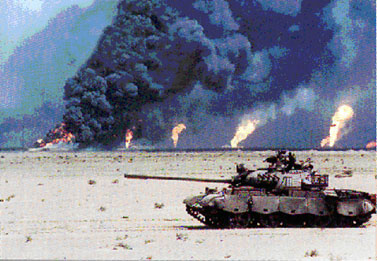 |
| Kuwait oil field destruction |
How the Corps Helped Reconstruct Kuwait Following the Persian Gulf War
The Corps' emergency assistance activities in Kuwait helped stabilize the nation immediately following the Gulf War. The mission of the Corps then evolved into one of infrastructure reconstruction. On 30 April 1991, authority over the entire effort was passed from the theater commander to the Secretary of the Army. Likewise, the Defense Reconstruction Assistance Office, a new agency that continued to coordinate closely with the Kuwait Emergency Recovery Office (KERO), replaced Task Force Freedom. The Corps provided construction and contractual expertise critical to the reconstruction of the emirate. To begin recovery work, the Corps awarded many contracts, most of which went to U.S. firms. KERO was able to reopen 145 schools in less than four months and also reopened another 1,000 public buildings. Additionally, Company A, Engineer Battalion (Prime Power), redesignated as the 249th Engineer Battalion, remained in theater until September to provide power generation and perform other operational and maintenance projects for U.S. Central Command.
The U.S. Armysupported the largest oil-fire-fighting campaign in history. Withdrawing Iraqi soldiers blew up more than 600 oil wells, resulting in a production decrease of almost six million barrels per day.
Ultimately, Kuwait would lose one billion barrels of oil from its reserve due to this malicious Iraqi act. The Corps helped the Kuwaitis gather information about the well fires, plan logistical support, and develop an emergency plan of action. It also contracted with Bechtel International to reconstruct the petroleum production infrastructure and to provide food, housing, and other support to the firefighters. Combat engineer vehicles with turret-mounted demolition guns and hydraulically-operated debris blades were provided to support the fire suppression effort. Initial estimates predicted that it would take up to two years to extinguish the fires and repair the wells. However, by 25 July Kuwait was able to announce the impending resumption of oil exports, and by November, well in advance of predictions, all of Kuwait's formerly burning oil wells had been capped.
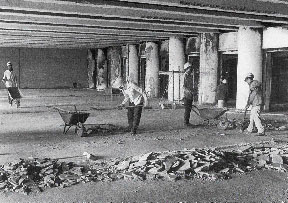 |
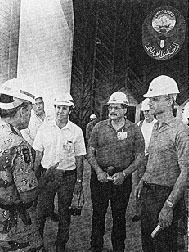 |
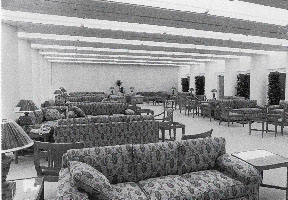 |
| Damage to the executive office waiting area of Kuwait's parliament building, August 1991. |
Gen. Hatch, then Chief of Engineers, left, visits Corps engineers at the parliament building. |
One year later following renovations. |
Demining was another Corps activity in Kuwait. Corps personnel and engineering troops took part in the international effort to remove an estimated nine million landmines laid by Iraqi troops in Kuwait, only a fraction of which were cleared more than a decade later.
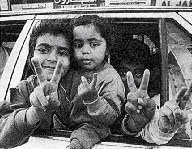 |
| Kuwaiti children celebrate liberation of their country. |
n the space of a year KERO issued about 1,200 work orders valued at more than $500 million. These projects included the repair and restoration of Kuwait's Parliament building at a cost of $68 million, hundreds of major government buildings and schools, numerous new or rehabilitated hospitals, 5,000 kilometers of 300-kilowatt power lines, ninety electrical substations, the national water and sanitation systems, the terminal facilities at the international airport and at two military airfields, 250 kilometers of national highways, eight bridges, and two deepwater shipping ports, as well as the construction of a base for 5,000 U.S. troops that were permanently stationed in Kuwait.
Further reading:
Supporting the Troops - The U.S. Army Corps of Engineers in the Persian Gulf War, Janet A. McDonnell. October 1996. EP 870-1-50.
After Desert Storm -- the U.S. Army and the Reconstruction of Kuwait, Janet A. McDonnell. June 1999. EP 870-1-58.
* * *
February 2002